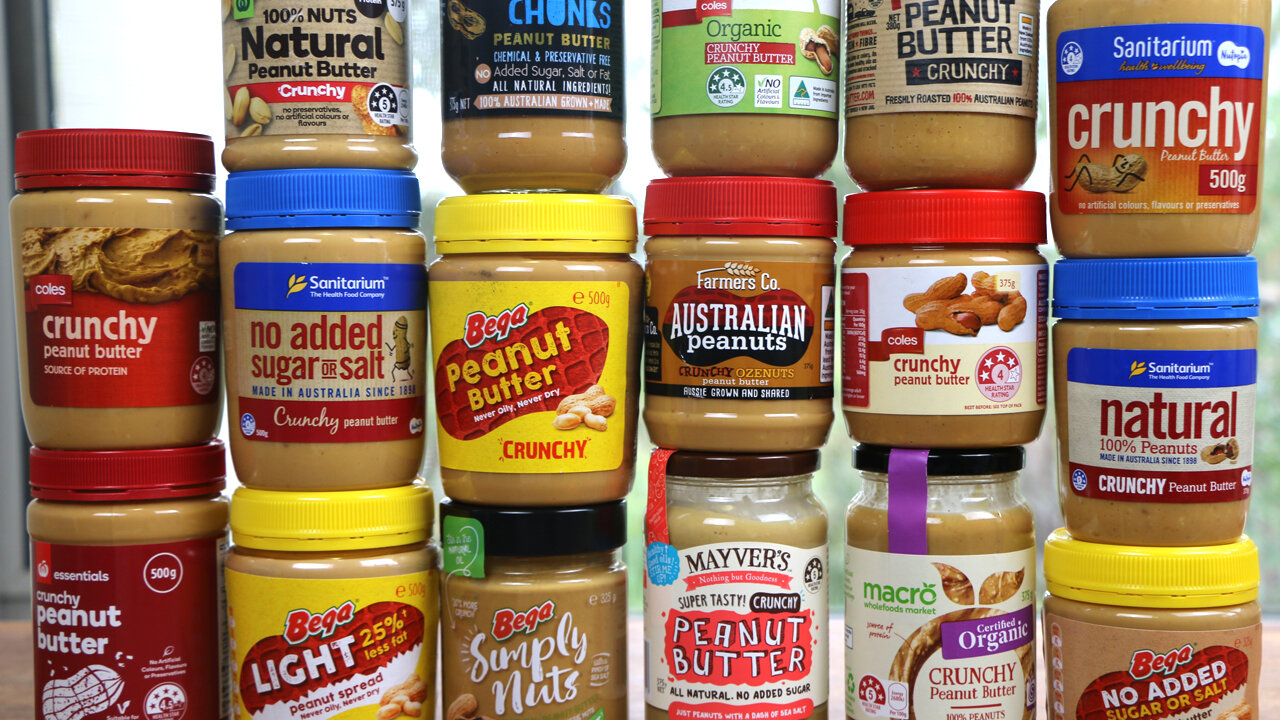3 Myths about Peanut Butter Debunked | A Healthy Peanut Butter Option
Peanut butter has long been considered to be a satisfying, high protein snack. These days, people often enjoy it with vegetable sticks, wholegrain bread or crackers, corn thins, or even eaten by itself. However, there are lots of myths surrounding peanut butter. The most common ones I’ve heard from my clients are: “I should avoid peanut butter as it’s very high in calories”; or “peanut butter is very high in fat so I’d better avoid it as my cholesterol is very high”. Would you agree with them? Let’s debunk these myths surrounding peanut butter.
Myth 1: Peanut butter is unhealthy as it’s high in calories and fat
For a lot of peanut butter products on the supermarket I would say, “yes, unfortunately they’re not very healthy”. Why? Sadly, in order to give them a longer shelf life and make them ‘more suitable to our palate’, a lot of refined sugar, salt and preservatives are added to many peanut butters. So rather than being the peanuts that make them unhealthy, it’s actually these extra added ingredients.
So, if it’s pure or almost pure peanut butter, meaning it has either no or very few of these above added ingredients, it should be healthy, right? The answer is yes! Not only can it satisfy your palate with its rich, nutty flavour, but it also keeps us satisfied for a long time.
After some solid research into the different options available in supermarkets, I found a peanut butter that I reckon really stands out – Pic’s Peanut Butter. Not only is it an almost pure peanut butter, with the only added ingredient being sea salt (0.5%), it also uses a very unique type of peanut. More about this under myth 2.
Myth 2: All peanuts used in peanut butters are the same
One of the most interesting facts about Pic’s Peanut Butter is the type of peanuts it uses. They’re what’s called ‘Hi Oleic Peanuts’. Let’s break down this terminology ‘Hi Oleic’ for a moment. Oleic is short for Oleic Acid, which is a type of omega-9 monounsaturated fatty acid. Numerous studies1 have shown that oleic acid can decrease chronic inflammation in our body and has a positive connection with a reduction in the risk of coronary heart disease. Chronic inflammation might be the leading drivers for metabolic syndrome like Type 2 Diabetes, obesity, and arthritis. Still confused? Think about the healthiest oil – extra virgin olive oil. The main health benefit is due to its high oleic fatty acid content.
Note that the Monounsaturated Fat refers to Oleic Fatty Acid content.
Apart from its high oleic acid content, there are some other things that really stand out:
Compared with traditional peanut butter products, Pic’s has no added sugar, less saturated fat and much less sodium.
Compared with other no added sugar peanut butter products with little added salt, it has much more monounsaturated fat and much less omega-6 polyunsaturated fat. Noting that, almost all polyunsaturated fat in peanut butter that has been produced from normal peanut species is omega-6 polyunsaturated fat, according to AUSNUT 2011- 13. AUSNUT is short for Australian Food and NUTrient Database. Keep on reading to Omega-6 polyunsaturated fat section to see why this is important.
Myth 3: Peanut butter will make your cholesterol go up
If you pay attention to your next blood test result, you’ll see there are normally four types of cholesterols. The first one is total cholesterol; obviously it indicates the amount of total cholesterol in your blood. Cholesterol is used to build cells and a lot of hormones, which is very important for us. So why does your doctor still suggest you to control your cholesterol level when it is very high? You might find this article helpful. The second one is triglyceride which consists of one glycerol and three fatty acids. Triglycerides store unused calories and provide our body with energy. High triglycerides indicate a high carbohydrate/sugar diet. HDL is well-known as the ‘healthy’ cholesterol because it helps to remove other ‘unhealthy’ forms of cholesterol from our bloodstream. Higher levels of HDL cholesterol indicate lower risk of developing arteriosclerosis and heart disease. LDL normally carries a bad reputation that it mayblock our arteries and therefore cause heart problems especially when LDL is oxidized.
Basically, the main reason that our blood cholesterol (LDL) goes up is due to the intake of excessive amount of saturated fat (e.g. butter, sausage, chips, fatty meat etc). Interestingly, only a small proportion of cholesterol in our food will be converted as blood cholesterol. With only 6g of saturated fat per 100g, Pic’s peanut butter almost has no impact on our blood LDL cholesterol. Major health bodies like the American Heart Association2, Mayo Clinic3 and the Dietitian Association of Australia4 have actually suggested a total cholesterol reduction when participants regularly eat foods that are high in monounsaturated fat/oleic acid – which there’s plenty of in Pic’s Peanut Butter. Moreover, the protective properties of dietary monounsaturated fat/oleic acid on the arteries go beyond its cholesterol lowering ability5.
Other facts about Pic’s Peanut Butter
Due to the fact that Pic’s Peanut Butter doesn’t contain any vegetable oil with antioxidant 320 – a preservative, not a real antioxidant normally associated with superfoods, you’ll find the natural peanut oil will gradually separate from the peanut solids if it sits on the shelf for weeks. But this is fine, it’s what you would expect in natural peanut butter. You only need to give it a quick stir before eating.
Pic’s Peanut Butter has a very rich nutty flavour with a subtle salty hint. It’s perfect for spreading on wholegrain breads, making a healthy satay sauce or even for baking with.
Deciding which peanut butter to buy
Pic’s Peanut Butter (both smooth and crunchy) is one of the healthiest peanut butter products on the market. However, if you can’t find Pic’s Peanut Butter, or you are concerned about the price and end up not choosing Pic’s, any peanut butter that does not have added sugar and is low in sodium (<300mg per 100g) should be a better option compared to salt- and saturated fat-filled butter on a piece of bread. Having said that, when it comes to all the food we eat, moderation is the key.
References:
Dietary fat modifies the postprandial inflammatory state in subjects with metabolic syndrome: the LIPGENE study
https://www.heart.org/en/healthy-living/healthy-eating/eat-smart/fats/monounsaturated-fats
https://www.mayoclinic.org/healthy-lifestyle/nutrition-and-healthy-eating/in-depth/fat/art-20045550
Pérez-Jiménez F, López-Miranda J, Mata P 2002, ‘Protective effect of dietary monounsaturated fat on arteriosclerosis: beyond cholesterol’, Atherosclerosis, vol. 163, no. 2, pp. 385-98.





